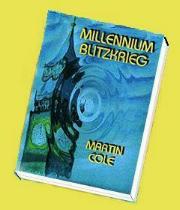The Steelyard & German gains from 10 years of the Euro.
For Germany's car industry which boasts heavy hitters such as Daimler, BMW and Volkswagen, this has certainly been good news.
Since the euro was introduced, German carmakers have saved between 300-500 million euros (S$500-850 million) annually on transaction costs, according to Juergen Pieper, analyst at German bank Metzler
Ferdinand Fichtner, economist at the Berlin-based DIW economic institute, highlighted the importance of the eurozone as a marketplace for German goods.
"About 40 per cent of its exports are destined for the eurozone and 20 per cent for the rest of the European Union," he said.
It is somewhat surprising, given the substantial nature of these gains, the dangerous games the German government seems recently prepared to play with the underpinnings of the common currency, which is why a research on the history of the Hanseatic League, provides such fascinating reading over this holiday period. Here is the Wikipedia entry on the Steelyard, the German factory in London, eventually removed by Queen Elizabeth the First, in 1598, predictably re-opened by James I, but never subsequently regaining its same power or influence.
Labels: Hanseatic League


0 Comments:
Post a Comment
<< Home